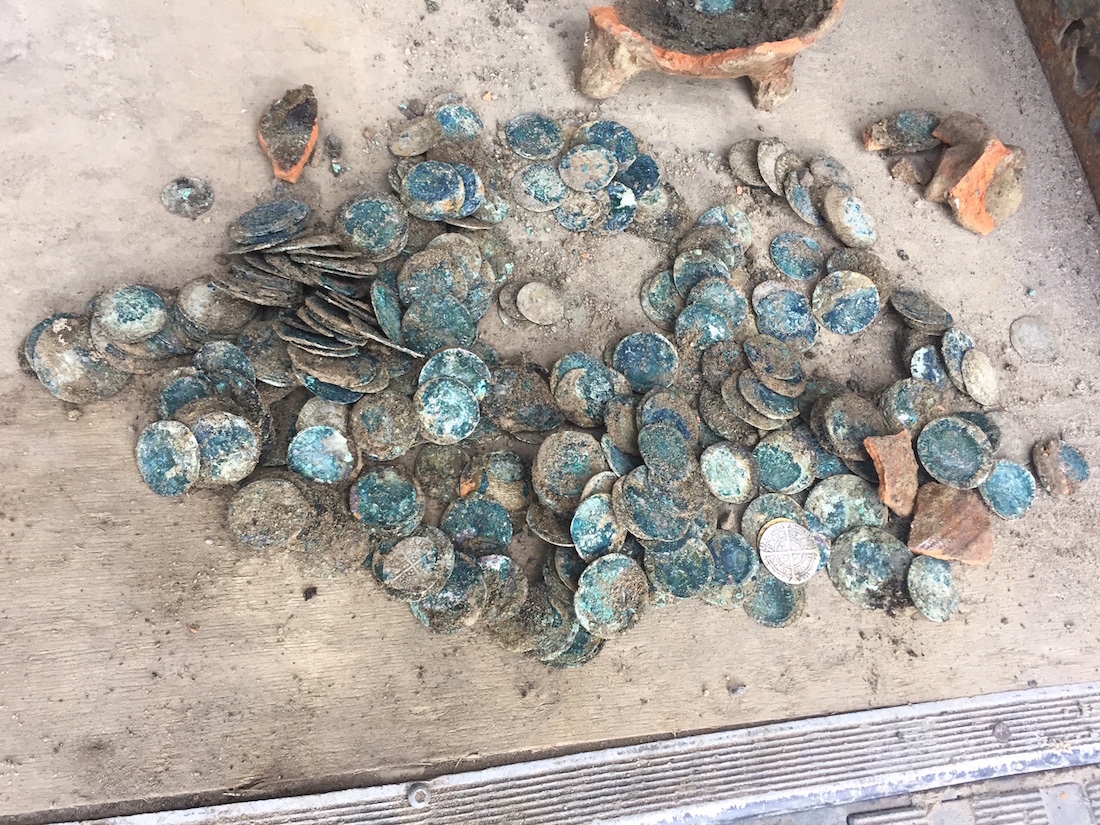When you buy through links on our site , we may take in an affiliate commission . Here ’s how it works .
Sometimes you do n’t postulate to abide by a rainbow , but rather a drain piping , to discover a pot o ' atomic number 79 .
That ’s what happened for service program prole in the Netherlands , who trip up across a 100 - old pot of gold earlier this calendar month while laying down Modern pipes , according to news show report .

The gold and silver coins date to the 15th century.
The remarkable find includes 500 coin — 12 of them gold and the rest ash grey — dating to the fifteenth century , which were snuggle indoors of a glaze , earthenware cooking plenty , accord to the NL Times .
employee of Oasen , a drunkenness - water company , discovered the treasure on March 1 , when they were laying down pipes in Hoef en Haag , a new town in the central responsibility of Utrecht . As soon as they found the coins , the workers call Utrecht ’s archeological hotline , which sent archaeologists to scrutinise the domain and amass the artifacts . [ Top 10 Rare U.S. Coins ]
The prize raft also bear cloth , which may have once served as moneybags of variety to hold the coins , Peter de Boer , an archeologist at Omgevingsdienst Regio Utrecht ( Environment Service Region Utrecht ) , severalise RTV Utrecht . The bulk of the coins date to the 1470s and 1480s , and some have imagery render King Henry VI of England ( and the disputed top executive of France ) , Pope Paul II , and David of Burgundy , who was bishop of Utrecht .

" Every coin in this treasure is a floor in precious alloy , " de Boer tell RTV Utrecht . " Every gentleman gave out his ' business organization card’by fashion of a coin , and therefore , there is a raft to discover . "
Moreover , the coins may shed light on what happened to the chivalric metropolis of Hagestein after it fell in a siege in 1405 , de Boer said . " In this sense , we now have a ' pot full of stories , ' " De Boer append .
The artistry on the coins may also help investigator learn more about the Burgundian Netherlands , a collection of fiefdoms that included parts of modern - day Belgium , the Netherlands , Luxembourg and northern France that were ruled by the duke of Burgundy , an ancient parentage of French nobleness with deep ties to France ’s royal family . The Burgundian Netherlands existed from 1384 to 1477 , and during that time , some of the coin were still in utilization , according to the Metropolitan Museum of Artin New York City .

The coins are now being appraised and studied , but will soon be pass to their new owners — Oasen , the project developer and the people who own the land where the coins were found , according to NOS , the Dutch broadcasting instauration .
Original clause onLive Science .















